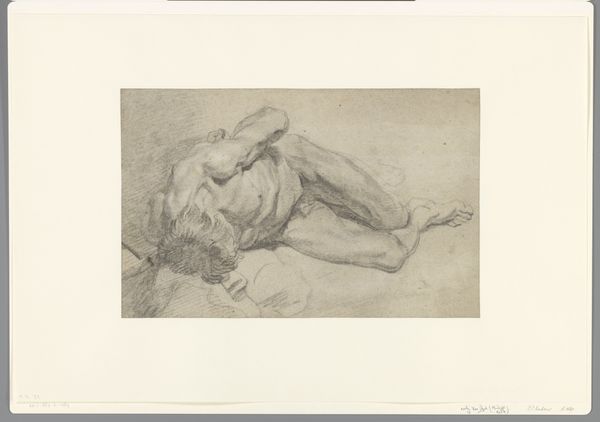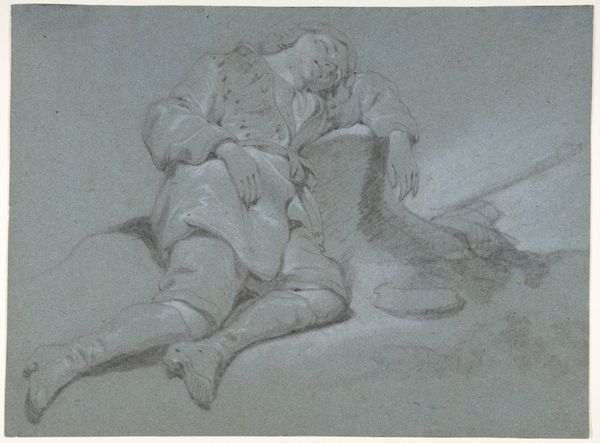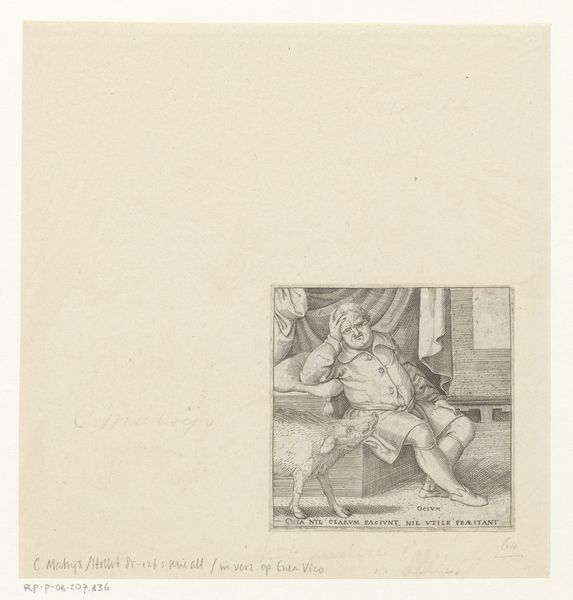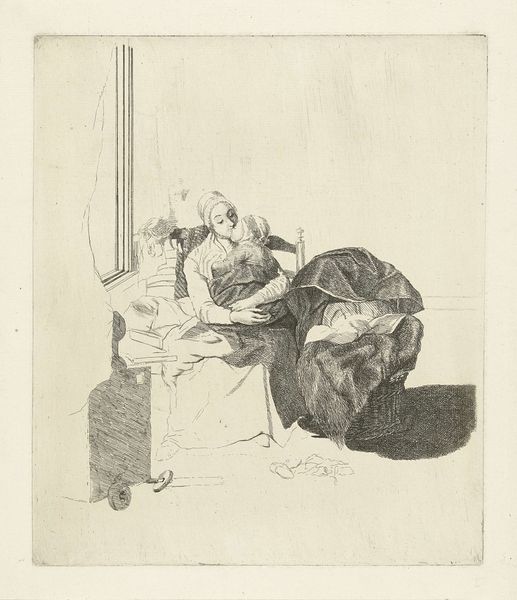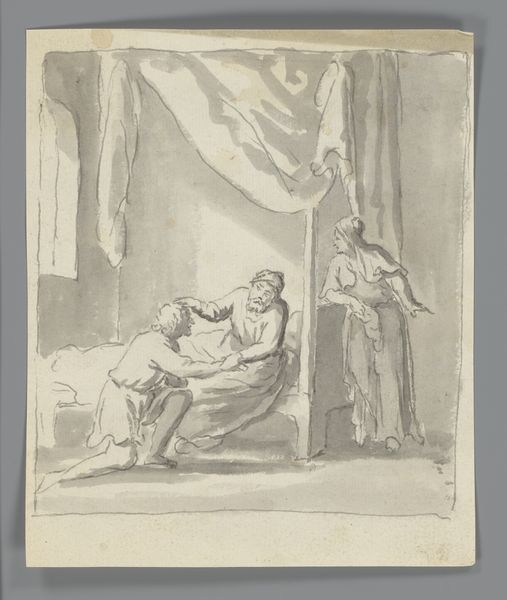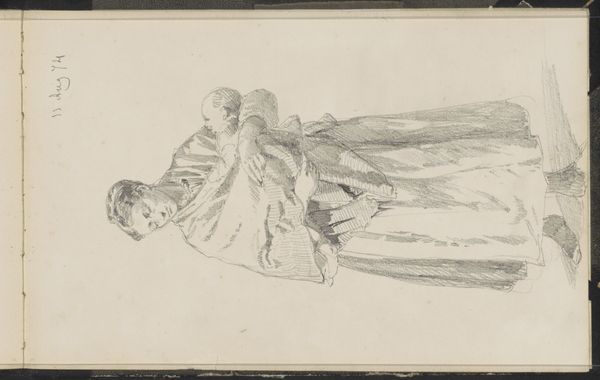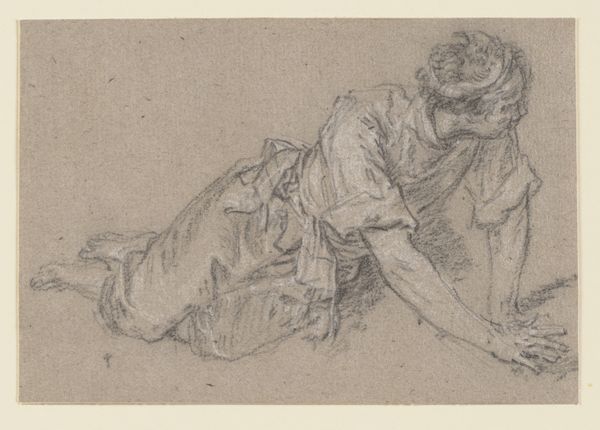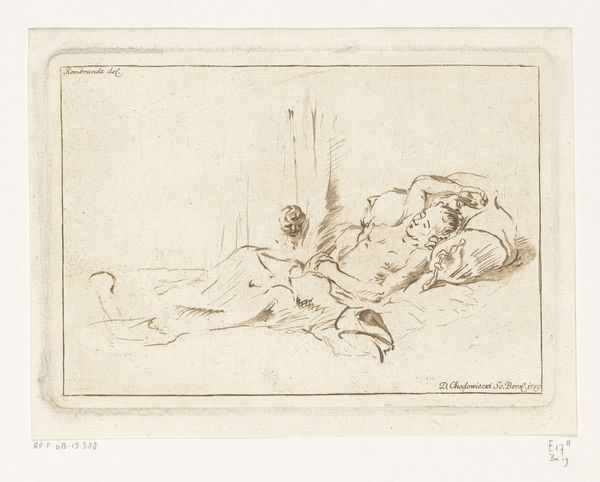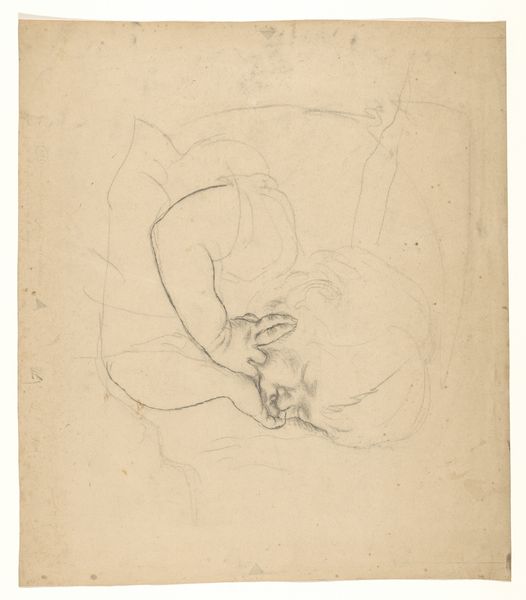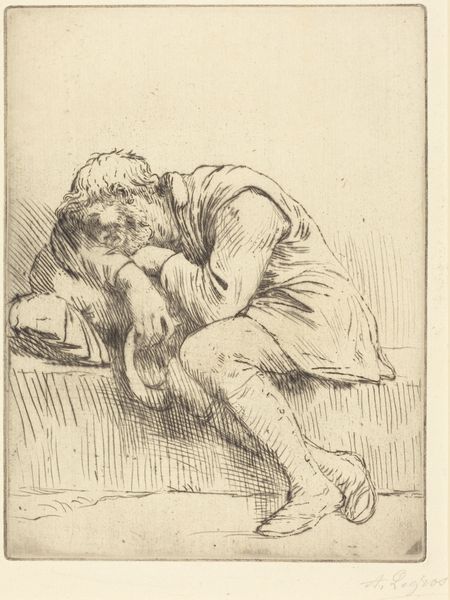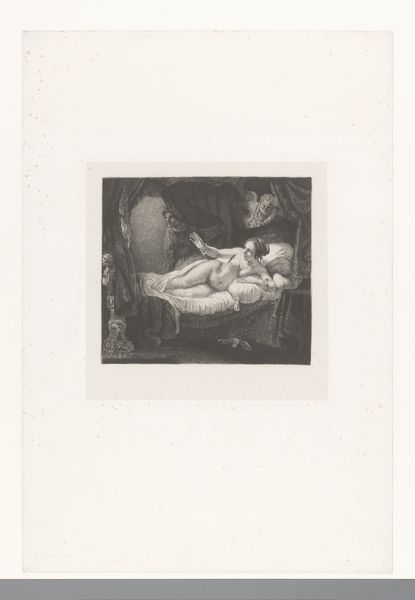
drawing, paper, pencil
#
portrait
#
pencil drawn
#
drawing
#
light pencil work
#
narrative-art
#
dutch-golden-age
#
ink paper printed
#
pencil sketch
#
figuration
#
paper
#
pencil
#
sketchbook drawing
#
pencil work
#
genre-painting
Dimensions: height 222 mm, width 215 mm
Copyright: Rijks Museum: Open Domain
Curator: Immediately striking is the stark contrast between the delicate linework and the rather heavy mood the drawing seems to convey. Editor: Indeed. We are looking at "Op de grond liggende man," or "Man Lying on the Ground," a pencil drawing on paper attributed to Johan le Ducq, created sometime between 1639 and 1677 during the Dutch Golden Age. Le Ducq's piece situates itself within a time marked by distinct class stratifications, particularly a growing poor population. Curator: It’s interesting how the loose lines forming his garments contrast with the clear, almost stark depiction of his worn boots. Do you think this hints at an element of practicality winning out over attempts to cover poverty, given the fashion of the time? Editor: Precisely. The emphasis on those worn boots suggests a preoccupation with daily survival—work and physical labor become centrally visualized elements. The artist makes the statement clear by presenting them to us at the painting's bottom. The rough depiction almost demands a deeper look into the work involved. Curator: Absolutely. There's a story etched into every sketched line, every contour subtly shaped, inviting our gaze to imagine how societal narratives often intersect to form the human experiences presented to us. One wonders, who was this person and how did the circumstances of his life impact the art world's decision to record this level of poverty. Editor: It certainly disrupts romanticized visions of the era. Here, Le Ducq chooses to spotlight someone easily overlooked, making the viewer acknowledge their existence and labor's cost, pushing back against the consumerist culture that often dominated art at the time. Curator: The ethics and materiality intertwine—challenging norms by visualizing what was systemically devalued during this epoch, and I love that. Editor: I agree, I see in this depiction both the vulnerability of its subject and the way a close observation and simple recording of materials could create a unique reflection on an era.
Comments
No comments
Be the first to comment and join the conversation on the ultimate creative platform.
